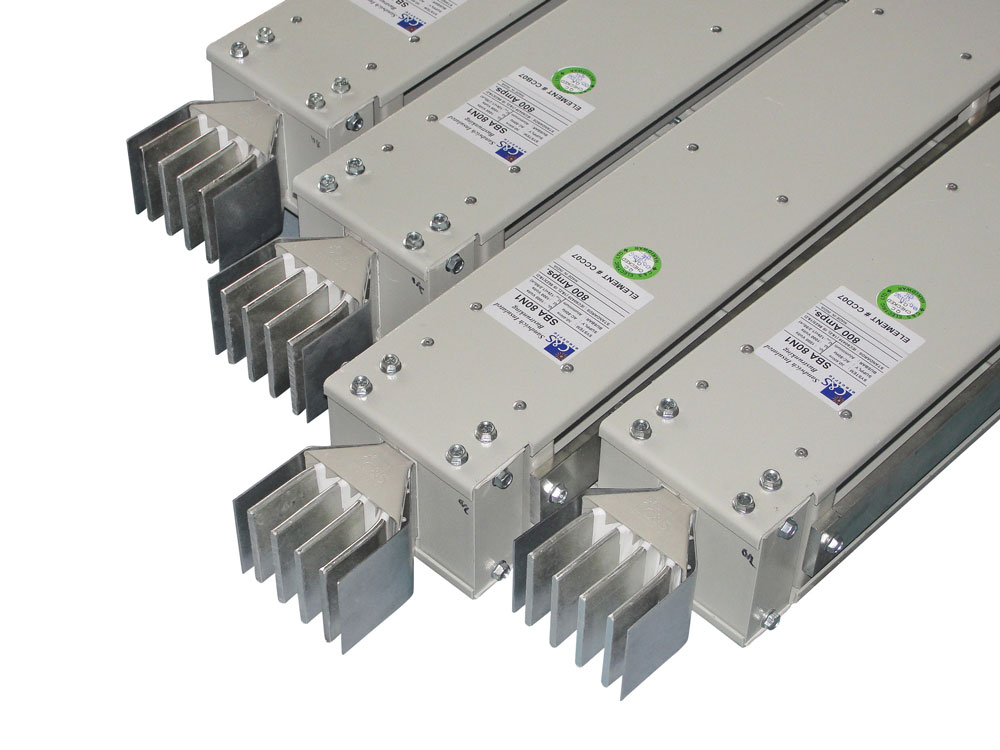In the evolving landscape of power distribution, Busbar Trunking Systems have become a game-changer for many industries. These systems offer superior flexibility, efficiency, and safety compared to traditional cable systems, making them a popular choice for modern infrastructure projects. In this guide, we’ll cover the essential aspects of busbar trunking systems, from their design and installation to ongoing maintenance.
What is a Busbar Trunking System?
A busbar trunking system is a method of distributing electrical power using copper or aluminum busbars housed in a protective casing. This system replaces conventional cabling, offering improved energy efficiency, reduced voltage drops, and enhanced safety. Busbars provide an easy way to manage electrical loads, especially in industrial, commercial, and high-rise building applications.
Busbar systems are designed to accommodate various voltages, currents, and configurations, ensuring reliable and scalable power distribution.
Key Components of Busbar Trunking Systems
Busbar trunking systems consist of several core components:
- Busbars: Conduct electricity and are typically made of copper or aluminum.
- Trunking Casing: Provides protection and insulation, keeping the busbars safe from environmental factors.
- Joints and Connectors: Allow for modular connections between sections of the busbar system.
- Tap-Off Units: Facilitate the safe connection of equipment to the busbar.
These components work together to ensure efficient power transmission and distribution while reducing risks like overheating and electrical faults.
Designing a Busbar Trunking System
Designing a busbar trunking system requires careful planning to ensure optimal performance and safety. Several factors must be considered during the design phase:
- Load Calculation: It is essential to calculate the electrical load that the system will need to handle. This involves understanding the power demands of the facility and accounting for future expansion.
- Material Selection: Busbars are typically made from copper or aluminum. Copper offers better conductivity, but aluminum is lighter and more cost-effective.
- Voltage and Current Requirements: The system should be designed based on the required voltage levels and the current-carrying capacity of the busbars.
- System Layout: The layout should consider the placement of equipment, accessibility for maintenance, and the need for future expansion.
- Thermal Management: Proper ventilation and cooling mechanisms should be integrated to manage the heat generated by the busbars during operation.
Careful design can help prevent issues like energy loss, overheating, and system failure, ensuring the busbar system operates at peak efficiency.
Busbar Trunking System Installation
Installing a busbar trunking system requires expertise and attention to detail. Whether you’re working on a new project or upgrading an existing infrastructure, following best practices is critical for ensuring a smooth installation process. For professional services, companies like Manikaran provide specialized Busbar Trunking System installation that ensure the system is correctly set up and optimized for performance.
Key steps in the installation process include:
- Site Survey: A thorough assessment of the site is necessary to identify potential challenges and ensure compatibility with the design.
- Installation of Trunking Sections: The trunking sections are typically installed in a modular format, allowing for flexibility in layout and easier management of the system.
- Connection of Tap-Off Units: The tap-off units must be securely connected to allow safe and efficient distribution of electricity to different parts of the facility.
- Testing and Commissioning: After installation, the system must be tested to ensure everything is functioning correctly. This includes voltage testing, load testing, and safety checks.
Maintenance of Busbar Trunking Systems
Regular maintenance of busbar trunking systems is essential for long-term reliability and safety. A well-maintained system can operate efficiently for decades, but neglecting maintenance can lead to performance degradation or even hazardous situations.
Here are some essential maintenance practices:
- Visual Inspections: Regular visual inspections can help identify signs of wear, corrosion, or damage to the trunking or tap-off units. Catching these issues early can prevent larger problems down the line.
- Thermal Imaging: Using thermal imaging cameras, technicians can detect hot spots in the system, which could indicate potential overheating issues.
- Tightening Connections: Over time, the connectors and joints may loosen due to thermal expansion and contraction. Regular tightening of these connections ensures a stable electrical path and reduces the risk of faults.
- Cleaning: Dust, debris, and moisture can accumulate inside the trunking and around the connectors, potentially causing short circuits or corrosion. Keeping the system clean will improve its longevity.
- Electrical Testing: Performing routine electrical tests, such as insulation resistance tests, helps in identifying faults before they lead to system failures.
Why Choose a Busbar Trunking System?
Busbar trunking systems offer several advantages over traditional cable systems, making them ideal for a wide range of applications:
- Energy Efficiency: Busbars have lower resistance compared to cables, which results in reduced power losses and increased efficiency.
- Flexibility: The modular design allows for easy expansion, modification, or relocation, making it highly adaptable to changing power needs.
- Safety: With a lower risk of overheating and electrical faults, busbar systems provide enhanced safety, especially in environments where high power loads are necessary.
- Cost-Effective: Although the initial investment may be higher, the long-term savings on maintenance, energy efficiency, and future upgrades make busbar systems a cost-effective solution.
- Space-Saving: The compact nature of busbar systems makes them ideal for areas with limited space, allowing for more streamlined installation compared to traditional cabling.
Conclusion
In today’s fast-paced industrial and commercial environments, investing in a Busbar Trunking System is a strategic decision for efficient and safe power distribution. From careful design considerations to expert Transformer Installation services and ongoing maintenance, each step plays a critical role in ensuring the system’s longevity and performance.
By adopting busbar trunking systems, businesses can reduce energy costs, improve operational safety, and future-proof their power infrastructure against evolving needs. When properly installed and maintained, a busbar trunking system is not only a reliable solution but also a long-term investment in the facility’s power distribution network.
Would you like further insights or keyword lists for your digital marketing or content strategy development? Feel free to ask for related topics to expand your content!

